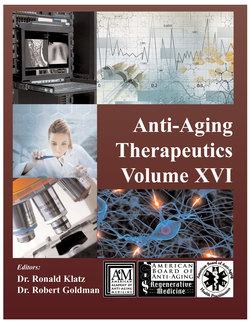Читать книгу Anti-Aging Therapeutics Volume XVI - A4M American Academy - Страница 9
Anti-Aging Medicine’s Prominent Adopters
ОглавлениеMultinational companies are pouring billions of dollars into anti-aging medical technologies. In particular, Silicon Valley has engaged significant resources.
Google backs privately held 23andMe, which offers a DNA test for consumers who can secure genetic reports and ancestry-related data. In 2013 by Google’s CEO and co-founder, Larry Page – 40 years old at the time, founded Calico (California Life Company) with $1 billion in start-up funding. Describing its goal as “focusing on the challenge of aging and associated diseases.” Page has observed19 that: “With some longer term, moonshot thinking around healthcare and biotechnology, I believe we can improve millions of lives.” Calico is headed by Art Levinson, former CEO of Genetech, a highly successful biotech company specializing in cancer therapies.
In mid-2014, Calico forged20,21 a 10-year R&D collaboration deal with AbbVie Inc., a major US drugmaker (notably, Humira®, a rheumatoid arthritis biologic). Each company is reported to invest an initial $250 million, with a possible additional $500 million in the future. Using this funding, Calico will use its scientific expertise to establish a world-class research and development facility and AbbVie will use its commercial expertise to bring the new drugs discovered in this facility to market.
In early 2014, US scientist Craig Venter, who mapped the Human Genome a decade ago, founded22 Human Longevity, Inc. With $70 million in its first round of private funding and prominent Asian real estate developers as key investors, the company aims to take a genome-based approach “to tackle the diseases associated with aging-related human biological decline.”
In late 2014, the health technology and medical lab services company Theranos reached23 critical mass. In 2003, Elizabeth Holmes, a then-19-year-old interested in microfluidics and nanotechnology dropped out of Stanford to start the company, which successfully raised $45-million in venture capital. Announcing a partnership to provide point-of-care blood testing in Walgreen’s Pharmacy stores across the US, Theranos is reported to now be worth over $9 billion. Oracle founder and CEO Larry Ellison is a Theranos board member.
In September 2014, Dr. Joon Yun, a California radiologist, announced24,25 that he would leverage his Palo Alto hedge fund to award $1 million to the first scientists who successfully halt aging. The Palo Alto Longevity Prize focuses on cardiac parameters, with two prizes of $500,000 each: one to be awarded to the team that can protect an animal's heart from aging, and another that succeeds in extending an animal's life expectancy by 50%. Yun observes that: “We spend more than $2 trillion per year on healthcare and do a pretty good job helping people live longer, but ultimately you still die.”
Clearly, the notion that “aging is not inevitable” now resonates with entities that are poised to have a major, lasting, and beneficial impact in the field. It is interesting, as well, to note that each of these megacorporations proudly equates themselves with “anti-aging.” As such, the phrase “anti-aging” is now poised for transformation from a disparaged term to one of prestige and dominance.
